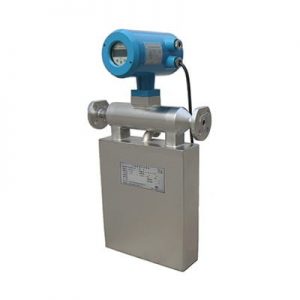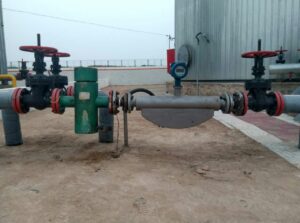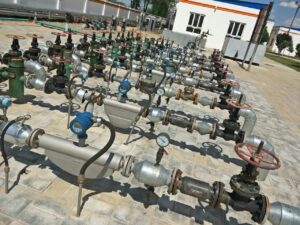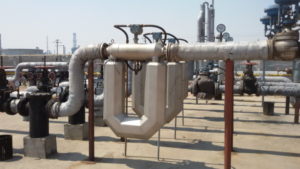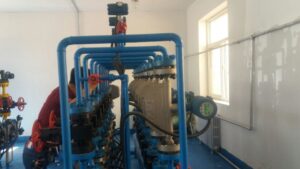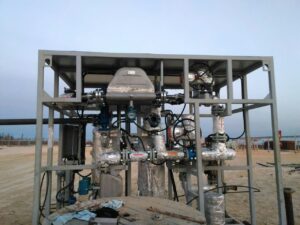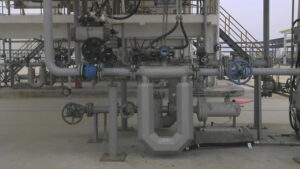The development of flow measurement technology and the application demand in the national economy are always interdependent. In a sense, application and demand are the driving force to promote the development of flow measurement technology. Although there are many types and specifications of flow meters so far, with the rapid development of social production, the current situation of flow meters still cannot meet the needs of product development, and there are still a large number of flow measurement technical problems that need to be further studied and resolved.
From the development history of flow meters, the development of traditional volume flow measurement methods and indirect mass flow measurement methods to the high accuracy direct measurement of fluid mass flow by Coriolis mass flow meters is indeed a major aspect of flow measurement technology. Progress. Just as all new things are developing in continuous improvement and perfection: so, mass flow measurement technology, especially the Coriolis mass flowmeter, should also continue to develop as it adapts to the requirements of various applications.
At present, various measurement methods of mass flow, including indirect and direct measurement methods, have certain applications. The mass flow indirect measurement method introduces the measurement of multiple intermediate parameters and then performs calculations and corrections, so the accumulated error is relatively large. However, because of its inheritance from the traditional method, the user is more familiar with it. In some measurement accuracy requirements, There are still more applications where it is not high. In particular, the application of compensation methods in measuring gas mass flow or gas volume under standard conditions is still very extensive.
In the future, the focus of the development of mass flow measurement technology is the direct mass flow measurement method to improve measurement accuracy and achieve high accuracy and high-reliability measurement of various media under complex environmental conditions.
As described in the previous section, the direct mass flow measurement method has developed to this day, and many types of mass flow meters have been produced. Among them, some are improved on the basis of volumetric flow meters, for example, differential pressure mass flow meters composed of orifice plates and constant flow pumps; dual-turbine mass flow meters composed of two turbines, etc. These flow meters are basically Without departing from the original structural form, it is the inheritance and development of the original structural form.
From the traditional volumetric flowmeter, through improvement, perfection, and improvement, it has been developed into a mass flowmeter. For example, a vortex flowmeter. On the basis of the original volume flow measurement only, the flow characteristics and resistance characteristics of the vortex flowmeter are further applied. To measure the mass flow of fluid will also have a certain practical value. According to the flow characteristics of the vortex flowmeter, the fluid generates a stable vortex through the vortex generator, and the frequency f is proportional to the flow velocity u of the fluid.
That is , within a certain range of Reynolds number, the measurement process is hardly affected by fluid composition, density, viscosity, pressure, and other changing factors. According to the resistance characteristics of the vortex flowmeter, the pressure difference
before and after the vortex generator is proportional to the dynamic pressure
of the fluid, that is
. Therefore, the ratio of the pressure difference before and after the vortex generator to the vortex frequency is proportional to the mass flow rate of the fluid. That is
, using this relationship, can be used to measure the mass flow of fluid.
At present, in practical applications, most of the direct measurement of gas mass flow is a calorimetric mass flowmeter, and the measurement of the mass flow of solid-phase powder and granular material flow is mainly an impulse mass flowmeter. Coriolis mass flowmeters are mainly used to measure the mass flow of liquid phase or liquid phase-based mixed-phase fluids. Thomas flowmeter is a calorimetric flowmeter that belongs to the contact method. Because the heating element and the measuring element are in direct contact with the fluid, the element is susceptible to fluid corrosion and wear, which affects the measurement accuracy and service life of the sensor. At the same time, it uses a heater to directly heat the surface. When the measured fluid is a dielectric or flammable and explosive medium, it cannot be used. Boundary layer flow meters and bypass tube thermal flow meters are non-contact calorimetric mass flow meters. In some respects, The shortcomings of Thomas flowmeters can be avoided, but their common shortcomings are that the measured gas must be a single component or a fixed component, the process conditions of the fluid are also more demanding, and the measurement accuracy is low.
In today’s fluid flow measurement, gas flow measurement is one of the more difficult problems. Therefore, the development of gas flow measurement technology, especially the improvement of the accuracy level of gas mass flow measurement, is an important topic before us.
Although the impulse flowmeter has a relatively compact structure, the measurement result of this device is extremely dependent on the structural properties of the material and the effective value of the impact velocity. Therefore, ensuring that the structural properties of the material and the impact speed of the material do not change and that the geometry and friction state of the punching plate do not change are the prerequisites for ensuring accurate measurement. In addition, the mass flow of solid materials can also be measured by the electronic belt weighing system and nuclear belt weighing system. At present, the biggest problem in the mass flow measurement of solid-phase materials is still the dynamic measurement accuracy is low.
Among various mass flow measurement methods, Coriolis mass flowmeters have been favored by users from all walks of life. This is because it can directly measure the mass flow of the fluid in the pipeline with high accuracy, and has high stability, good reliability, and a large range ratio. It is also suitable for higher viscosity fluids, such as various high-molecular polymer slurries, Heavy oil, food pulp, paper pulp, paint coatings, latex mixed slurries, and vitamin slurries, etc. In various industrial fields, this kind of flowmeter is mostly used in the process control of the mixing of ingredients.
In addition, it is also used in vehicle loading and unloading measurement and internal transfer measurement in enterprises.
At present, the detection tube shape of the Coriolis mass flow sensor has been developed to more than 20 kinds, the maximum diameter of the processing pipeline has been developed to DN150mm, and the measurement accuracy of mass flow is generally 0.2%-0.4%, with high accuracy It can reach 0.1%-0.15%.
In order to meet the needs of users in all aspects, Coriolis mass flow meters will continue to improve and develop. The International Organization for Standardization issued an international standard on Coriolis mass flow meters in 1994: “ISO10790 Measurement of Fluid Flow in Closed Pipelines-Coriolis Mass Flowmeters”. This standard can be used as a guiding document for Coriolis mass flowmeters in testing, inspection, installation and operation, and calibration. Recently, the International Organization for Standardization has drafted a standard document detailing the performance method of Coriolis mass flowmeters (ISO/DIS 11631) in a defined form. This document emphasizes that the flowmeter must be standardized so that users can foresee any Performance under environmental conditions. The release of these documents shows that the Coriolis mass flowmeter has begun to embark on the track of international standardization.
Our State Bureau of Technical Supervision also issued JIG 897-95, the National Metrological Verification Regulations for Mass Flow Meters in 1995, and has been implemented since December 1995. It marks that the Coriolis mass flowmeter has gradually become an important, widely used, and more mature flow measurement instrument.
From the actual application, the Coriolis mass flowmeter is undoubtedly one of the more advanced flow measurement instruments in the world today. But people have put forward new expectations from the perspective of its increasingly widespread application. People hope that the Coriolis mass flowmeter can further improve measurement accuracy, especially by improving the structural design, manufacturing process, etc., to improve its zero-point stability. Because the Coriolis mass flowmeter uses a resonant sensor, this requires that the flowmeter sensor can be structurally adapted to a variety of application environments and has a strong anti-interference ability. In order to expand its scope of use, it is also hoped that the flowmeter can continuously improve the ability and accuracy of measuring the mass flow of gas-liquid two-phase, liquid-solid two-phase, and gas-phase media. It is believed that with the continuous improvement of Coriolis mass flow meters, mass flow measurement technology will advance to a new level.
In short, the development of mass flow measurement technology has attracted the attention of all countries in the world, and they are actively exploring its solutions. Taken together, the current development of mass flow measurement technology should focus on two aspects:
First, for multiphase fluids, gases, corrosive fluids, high-temperature and high-pressure fluids, and large and small flow fluids, effective mass flow measurement methods need to be used, so that the varieties and specifications of mass flow meters can meet the needs of production development. With the advancement of science and technology, new technologies such as microwave, electromagnetic, nuclear technology, and microelectronics have been continuously introduced into the field of mass flow measurement. Sensor technology for high-accuracy measurement of mass flow without contact and obstruction of fluid moving parts will gradually mature. The manufacturing of secondary mass flow meters will become increasingly electronic, digital, and intelligent, and will increasingly integrate into the control and management network with Fieldbus technology as the core. These will open up new areas for mass flow measurement technology. The new mass flowmeter should have the characteristics of a wide application range, high sensitivity, wide range ratio, good stability, high accuracy grade, strong reliability, low price, and easy maintenance.
Second, the flow standard device should meet the verification requirements of mass flow meters. With the improvement of production technology, the accuracy level of various types of mass flow meters is also continuously improving, which requires the accuracy level of the flow standard device to meet this requirement. Most mass flowmeters currently use offline verification methods, but because the laboratory verification conditions and environment are very different from the on-site use conditions and environments of mass flowmeters, additional use errors are caused and measurement accuracy is reduced. Therefore, these mass flowmeters are developed On-site on-site calibration technology, and the development of a standard device for on-site real-liquid online calibration of mass flowmeters is the fundamental way to solve this problem.
With the development of my country’s market economy, the importance of saving resources and energy has been paid more and more attention. Therefore, it is increasingly required to improve the measurement accuracy of various flows. We believe that with the hard work of the majority of flow measurement scientists, mass flow measurement technology will be improved to a newer level.

